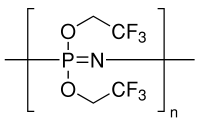The efficacy of nanoscale poly[bis(trifluoroethoxy) phosphazene] (PTFEP) coatings in reducing thrombogenicity and late in-stent stenosis in a porcine coronary artery model.
Stefanie Satzl, Christina Henn, Patricia Christoph, Patrick Kurz, Ulrike Stampfl, Sibylle Stampfl, Florian Thomas, Boris Radeleff, Irina Berger, Michael Grunze, Goetz M Richter
Index: Invest. Radiol. 42(5) , 303-11, (2007)
Full Text: HTML
Abstract
Previous experimental studies have demonstrated that poly[bis(trifluoroethoxy)phosphazene] (PTFEP) nanocoated stents have antithrombotic characteristics, reduce in-stent stenosis, prevent wall inflammation, and do not hamper endothelialization. This study was designed to validate these findings in a porcine coronary artery model.PTFEP-coated (n = 15) and bare stents (n= 13) were implanted in coronary arteries of 18 mini-pigs (4- and 12-week follow-up). Primary study endpoints were thrombogenicity and in-stent stenosis, secondary study endpoints were inflammatory response and re-endothelialization evaluated by quantitative angiography and light microscopy.No thrombus deposition occurred on any stent. At 4 weeks follow-up, the bare stents (n = 4) had a significantly smaller neointimal area (1.93 vs. 3.20 mm(2), P = 0.009). At 12 weeks, PTFEP-coated stents (n = 11) had significantly superior results in almost all parameters: neointimal area (2.25 vs. 2.65 mm(2), P = 0.034), neointimal height (204.46 vs. 299.41 microm, P = 0.048), percentage stenosis (38.25 vs. 50.42%, P = 0.019), and inflammation score (0.12 vs. 0.30, P = 0.029). Complete re-endothelialization was seen in both stent types at both intervals.At long-term follow-up, the superior results of PTFEP-coated stents were characterized by a noteworthy reduction of neointimal growth and inflammatory response.
Related Compounds
| Structure | Name/CAS No. | Molecular Formula | Articles |
|---|---|---|---|
 |
POLY(BIS(2 2 2-TRIFLUOROETHOXY)PHOSPHAZ&
CAS:28212-50-2 |
(C4H4F6NPO2)n |
|
Properties and clinical development of a novel coating techn...
2010-01-01 [Recent Pat. Drug Deliv. Formul. 4(1) , 18-22, (2010)] |
|
A new polymer concept for coating of vascular stents using P...
2005-04-01 [Invest. Radiol. 40(4) , 210-8, (2005)] |
|
Radiation grafting of hydrophilic monomers onto poly[bis(tri...
1994-09-01 [Biomaterials 15(11) , 937-43, (1994)] |
|
Polyphosphazenes as biomaterials: surface modification of po...
1993-05-01 [Biomaterials 14(6) , 430-6, (1993)] |
|
Arterial distribution characteristics of Embozene particles ...
2009-12-01 [J. Vasc. Interv. Radiol. 20(12) , 1597-607, (2009)] |